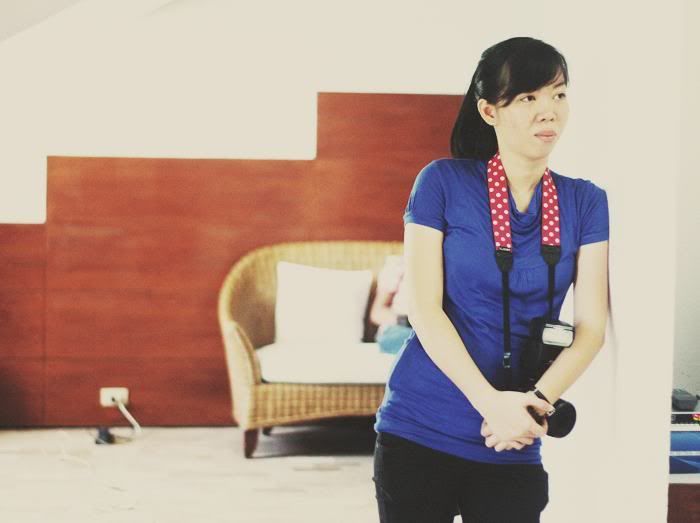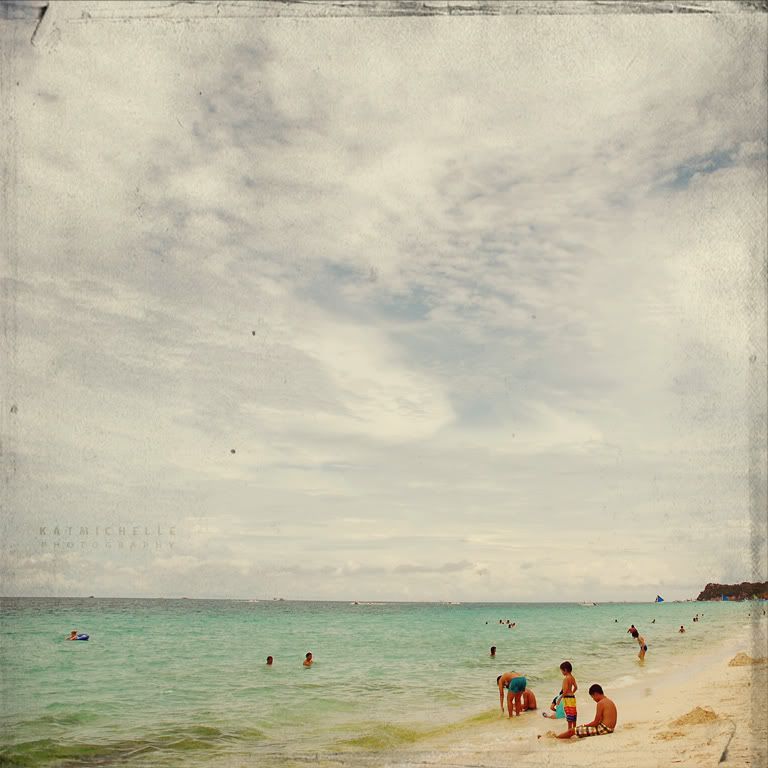Sunday, April 08, 2012
 12:37 AM |
The Conjurer of Deeper Things Beyond Pretty
12:37 AM |
The Conjurer of Deeper Things Beyond Pretty
Part 2 of the Dumaguete Design Upstarts SeriesThe world of photography—especially as it exists now with this glut of images spurred by the democracy of the digital—is a world plagued by, for lack of a better term, the disease of the pretty.
Oh, pretty can be nice. A lollipop is pretty. Something pretty is ready-made for easy appraisal. People flock to the pretty, the way most would
ohh and
ahh over something as banal as those picturesque scenes of the Filipino countryside depicted in mass-manufactured paintings hawked by third-rate department stores. Or the way a witless one would decorate a house with artificial flowers. Or blue “antique” Chinese vases. Pretty is the shallow side of what’s beautiful, and what’s more, lollipops do cause cavities.
In photography, “pretty” could mean something an untrained, undiscriminating eye would click at because they are informed by the shallow vocabulary of postcards—a generic sunset, a tired touristy shot of a kid with balloons, a ho-hum shot of a birthday candle on a cake. They’re nice to look at—but really, there’s not much there: they have nothing else to say except declare their cuteness.
And yet, in the sure hands of an artist, even the “pretty” can be elevated to something else entirely. I am reminded, for example, of the films of Douglas Sirk, whose saturated melodramas for Universal Pictures—
All That Heaven Allows, Written on the Wind, Imitation of Life, or
Magnificent Obsession—were first flippantly dismissed as shallow women’s films, but were soon revealed as subversive commentaries on 1950s rigidity. In Sirk, upon close reading, we see his pretty frames as manipulative, calculated gloss that buries an intelligent satire on a culture that unwittingly consumes these pictures as easy, tear-jerker entertainments. There is an artist’s mind behind the “prettiness,” which is only a tool to achieve something more transcendent and is never the end itself.

I am not sure if Kat Michelle Banay is a Sirkian manipulator of images, but I suspect there is something intelligent that lurks behind the pictures that she produces from her camera. Ms. Banay is another young photographer based in Dumaguete—somebody I have yet to meet—but the first time I came across her photography online, there was something breathtaking in their execution. Sure, what she had were pretty pictures—a cherry tree in full bloom, a wedded couple in repose, a tray of violet cupcakes, a clear bottle full of Scrabble tiles—but there was a depth to them I could not begin to articulate, or explain. Was it the haunting sadness of the cherry tree as it bloomed in full sunshine? Was it the unguarded tilt of the bride that betrayed something else other than bliss? Was it the sheer loneliness evoked by the still life of pastries? Was it the wistful manipulation of three Scrabble tiles, spelling out the word “art”?
I could ask what exactly it is about her images that strikes uncommon depths, but I doubt Ms. Banay would know the answer. The true artist never really knows where that intuition for beauty comes from. The poet Federico Garcia Llorca called it
duende, and Dumaguete photographer Hersley-Ven Casero calls it “the whisper that comes to me.”
In fact, photography was something she stumbled on as a hobby, her interest kindled in 2007 because she knew of a girl in Silliman High who “got to travel to places.” Ms. Banay recalled: “She would share photos of her escapades in Multiply. Back then, this was one of the top social networking sites. They were really just random snapshots of herself and her friends, but I found those cool. So I bought a digital camera, and took photos of me and my friends whenever we got the chance to travel. And then, months later, I realized I liked my photos better without myself in them, and so I went on and took shots of anything I found interesting or beautiful.”
Those things, of course, are the generic sort of “pretty” things—the beach, the sky, the trees. In other words, the raw materials for the budding image collector. Somewhere along the way, those images deepened into something more. They became, in a sense, a reflection of Ms. Banay’s secret self. The beach, the sky, the trees—they became metaphors for some inner surging. “Photography, like any other art, should be about self-expression,” she said. “The kind of subjects a person photographs somehow speaks something about the person behind the camera—what he likes, where he lives, what he does for a living, who he interacts with, what lifestyle he leads, how he finds beauty in the world and what it is he considers interesting. Looking at his pictures, you can tell how much deeper he sees things beyond the obvious. Anyone who is truly interested in photography will surely take pictures of things or places that he identifies with, and pictures are his ways of showing it.”
She continued: “For me, the best kinds of photographers out there are photojournalists, because they can capture the most special and meaningful moments that most people take for granted. That, plus the fact that they are able to compose well. But not every photographer has the eye of a photojournalist. And some of us just take pleasure in capturing random things around us, trying to make things more meaningful than how they appear. But whatever preference we have on subjects, what would be truly rewarding, though, is to inspire others just as others have inspired me.”
That inspiration springs from four sources—photographers Paul Vincent Photo (“I love that he seems to be able to capture the right moments in such a fast-paced event like a wedding, and do it so artistically”), Henri Cartier-Bresson (“he remind me to think before I shoot, that the best moments to capture are worth waiting for, that the perfect moment is out there and it is up to you to catch it”), Ansel Adams (“his work just seems to have just the right amount of black, white and gray”), and Stephanie Williams (“her photos so dreamy and inspiring, the kind that just makes you smile at the sight of them”). This says a lot about Ms. Banay’s education in the traditions of photography, something the plain amateur devoted only to the worship of the pretty would lack.
That education somehow shows in many of her photographic preferences. “I’m fond of taking pictures in natural light,” Ms. Banay said. In her photo titled
Beach, she takes what seems to be a random shot of Boracay in broad daylight, but in her composition of beachcombers, sand, surf, and cloud formation, she mixes a sense of summer tinged with a forbidding sense of heaviness. Look at that horizon. It is pregnant with a cutting sort of expanse. It is, almost, sad.

Is she cognizant of that effect in her photograph? Probably not, and perhaps all for the better. She simply recounted of it: “For me, the best place to shoot is the beach. This photo shows my love for travel, my love for the beach, and my love for shooting landscapes. It shows my fascination with cloud formations.”
And yet, there is some recognition in her part of a style, a photographic tick: “You’ll also notice my attempt in making this photo look vintage. I don’t know what about me adores old-looking photos. Now that I think about it, it’s funny that some photos I’ve taken were with modern equipment—but I make them look old, as if they were taken by cameras from the past.”
And sure, it looks pretty. But also something else entirely. That something else is what counts, and what makes Ms. Banay an artist.
Next: Ray Dy as the Maker of Small Beautiful Things
Labels: art and culture, dumaguete, negros, photography
[0] This is Where You Bite the Sandwich
GO TO OLDER POSTS
GO TO NEWER POSTS

















 12:37 AM |
The Conjurer of Deeper Things Beyond Pretty
12:37 AM |
The Conjurer of Deeper Things Beyond Pretty

